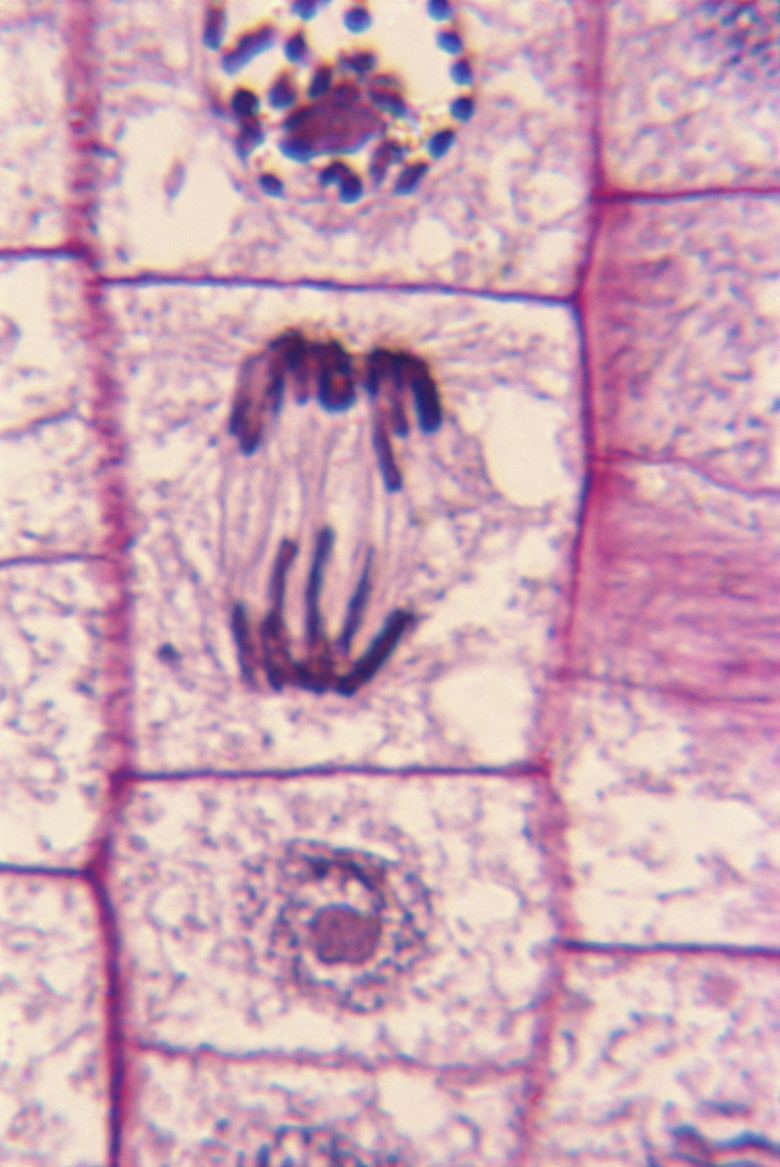How To Make A Model Of A Cell Nucleus
The genetic information of an organism is found packaged inside of a membranous compartment of the cell called a nucleus. The structure of the cell nucleus includes a double outer membrane with channels to the outside called pores; an inner fibrous matrix called nucleoplasm with embedded genetic material, and another smaller compartment called the nucleolus where important structures called ribosomes and ribosomal RNA are made. Most of the time the genetic material in the nucleus is in the form of spaghetti-like chromatin, but when the cell is getting ready to divide, the chromatin condenses into thicker strands called chromosomes. Although the nucleus is one of the largest structures in a cell, the radius of nucleus in human cells averages about 5 microns (5 millionths of a meter).
To make Styrofoam nucleus of a cell nucleus, use two different sized polystyrene balls to construct the model of nucleus structure with its interior nucleolus. Use two different colors of paint to clearly indicate the membrane necessary to make eukaryotic nucleus. Add pipe cleaner chromosomes. Use a pencil eraser to indicate the pores.
1. Beginning the Cell Nucleus Model
Cut out a quarter section of the large polystyrene foam ball, using the serrated knife or saw, by making two cuts straight to the center of the ball at ninety-degree angles to each other. Discard the small piece and use the large piece as your cell nucleus.
2. Marking the Nuclear Membrane
Spray the inside cut portion of the ball the lighter color, and then spray the outside of the ball with the darker paint. Paint a quarter inch outside edge on the lighter cut inside portion of the large polystyrene foam ball, using the darker craft paint and paint brush. This edge represents the two layered nuclear membrane and the paint color should match the outside "membrane" of the ball (nucleus).
3. Cutting the Nucleolus
Cut out a quarter piece section of the small polystyrene foam ball by making ninety-degree cuts to the center of this ball as well. Dispose of the three-quarter piece of ball and spray the small quarter piece with the dark spray paint.
4. Gluing the Nucleolus
Glue the quarter piece of small Styrofoam ball to the large polystyrene foam ball by matching up the outside right angle of the small ball to the inside right angle of the large ball. Press the two balls together tightly before the hot glue cools. The small ball is your nucleolus.
5. Adding the Chromosomes
Bend your colored pipe cleaners loosely into a cooked spaghetti shape. Shaping them around the nucleolus, press the pipe cleaners individually into the large polystyrene foam ball, forcing an indentation into the foam. Now add the hot glue and quickly press each pipe cleaner into its own slot. These are your chromosomes.
6. Adding the Nuclear Pores
Use the eraser side of your pencil to push dents into the outside of your large polystyrene foam ball. Do this all over the ball; these are your nuclear pores.
Things Needed
- Hot glue gun
- Hot glue sticks
- 6 pipe cleaners, 2 each of 3 colors
- Large polystyrene foam ball
- Small polystyrene foam ball
- Serrated bread knife or drywall saw
- 2 cans spray paint, 2 colors
- Paint, matching one spray paint
- Paintbrush
- Pencil
Cite This Article
MLA
Mullenniex, Anne. "How To Make A Model Of A Cell Nucleus" sciencing.com, https://www.sciencing.com/make-model-cell-nucleus-10038950/. 19 August 2018.
APA
Mullenniex, Anne. (2018, August 19). How To Make A Model Of A Cell Nucleus. sciencing.com. Retrieved from https://www.sciencing.com/make-model-cell-nucleus-10038950/
Chicago
Mullenniex, Anne. How To Make A Model Of A Cell Nucleus last modified August 30, 2022. https://www.sciencing.com/make-model-cell-nucleus-10038950/
